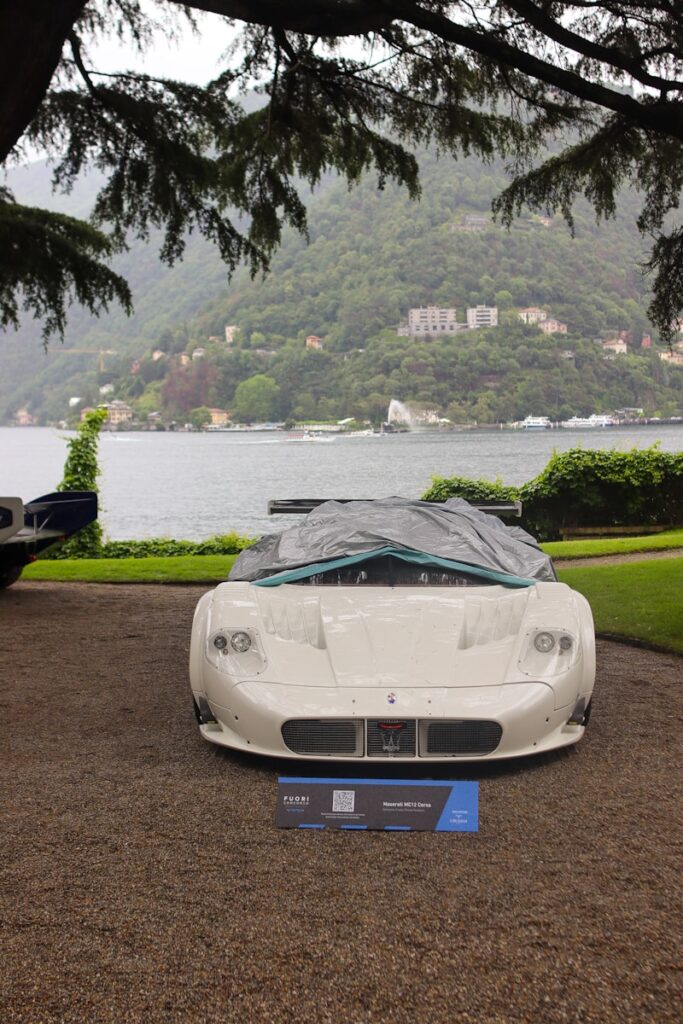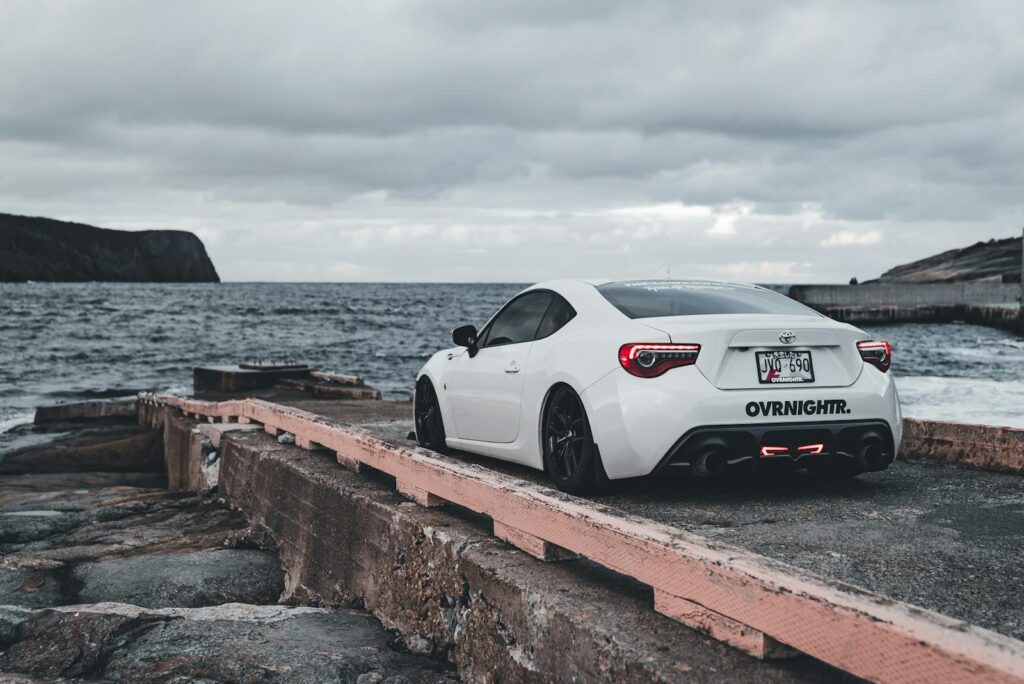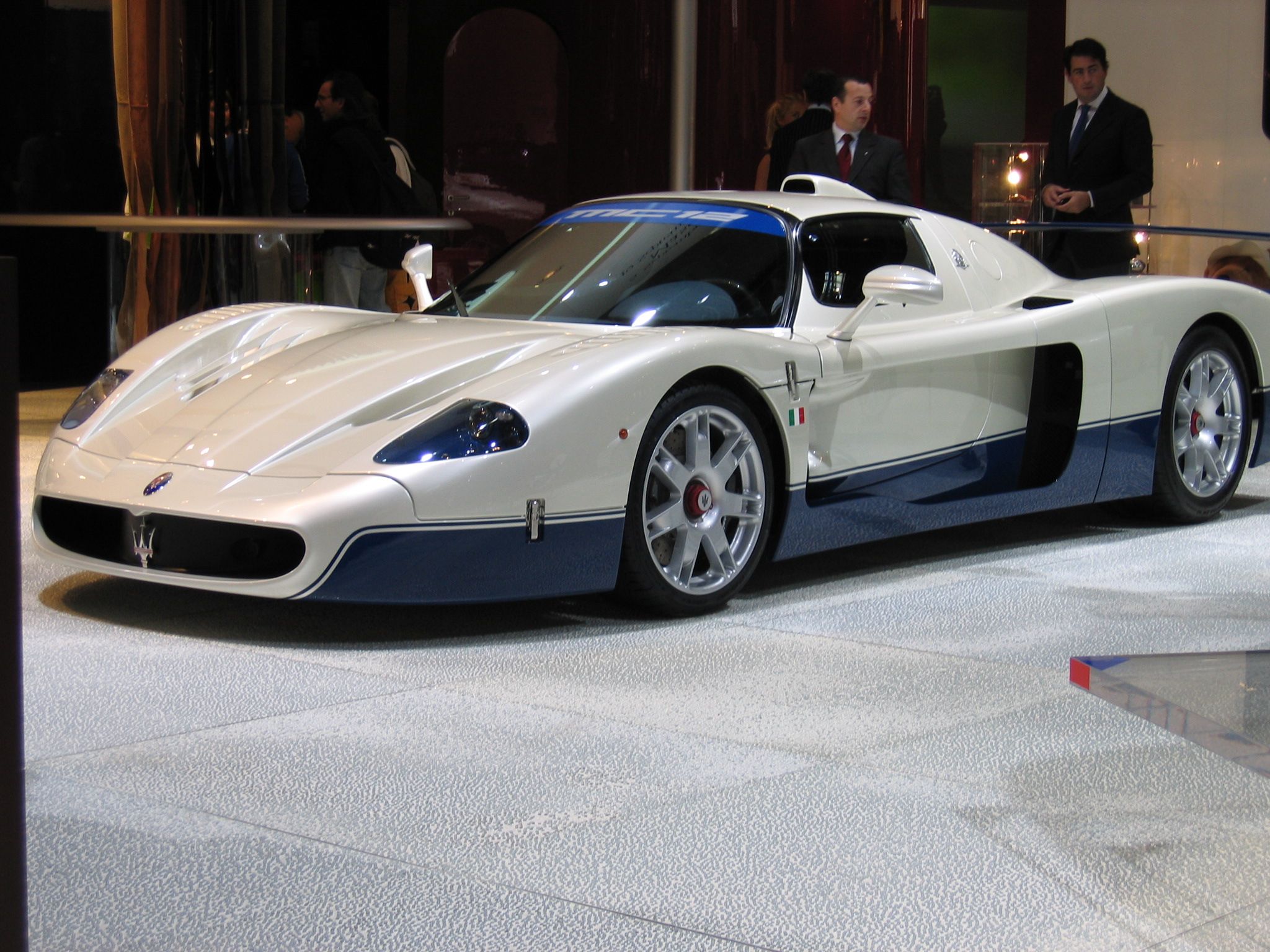
In the vibrant tapestry of automotive history, certain vehicles emerge not just as machines, but as profound statements, redefining perceptions and setting new benchmarks. For Maserati, the early 2000s marked such a pivotal moment. Long celebrated for its exquisite sedans and captivating coupes, the brand sought to re-enter the fiercely competitive world of GT Racing, a strategic move designed to emphatically globalize the understanding of the raw performance a true Maserati could offer. It was in this ambitious context that the ultra-rare Maserati MC12 came into existence, a supercar shrouded in mystique, its very name synonymous with exclusivity and unadulterated power.
The story behind the MC12’s genesis is as intriguing as the car itself, a testament to strategic collaboration within a shared automotive empire. At the time, both Maserati and Ferrari were under the umbrella of Fiat, fostering a unique environment for technological synergy. While Ferrari stood as an undisputed titan among supercar manufacturers, Maserati ingeniously leveraged this connection. The plan was audacious: borrow the formidable engine, the robust platform, and the sophisticated powertrain from the acclaimed Ferrari Enzo, forging the foundational DNA of what would become the Maserati MC12.
Initially, the vision was to create a mere 12 track-only MC12 supercars for an elite circle of private customers. However, the stringent regulations of the FIA GT Championship necessitated a pivotal shift; the brand was required to produce a road-legal version to obtain the crucial certifications for its racing variant. This mandate gave birth to the road-legal 2004 Maserati MC12, a magnificent machine produced in incredibly limited numbers – just 50 units for customers, split between 25 in 2004 and another 25 in 2005. This scarcity instantly propelled it into the echelons of the rarest cars on the planet, its value soaring to triple or even quadruple its original price, securing its place as an automotive legend.
1. **Genesis and Purpose: A Homologation Special**The Maserati MC12 wasn’t merely conceived as a high-performance luxury vehicle; it was, at its very core, a strategically engineered “homologation special.” Its existence was inextricably linked to Maserati’s ambitious and triumphant return to the world of GT racing, a glorious comeback after an absence of 37 years from international championship circuits. To secure its rightful place on the competitive grid of the FIA GT Championship, the rules dictated a crucial prerequisite: Maserati was required to produce a minimum of 25 road-legal versions of the car. This mandate ensured that the racing variant was rooted in a production model, directly connecting the exhilarating world of motorsport to the exclusive realm of road-going supercars.
This unique purpose infused every facet of the MC12 with a dual identity: a formidable racing machine capable of dominating the track, and an equally compelling, albeit ultra-rare, road-legal masterpiece. It wasn’t about mass production or sales volume; it was about re-establishing Maserati’s performance credentials on a global stage, signaling a powerful re-entry into competitive motorsport. The MC12 thus became more than just a car; it symbolized Maserati’s unwavering commitment to engineering excellence and its bold ambition to reclaim its heritage as a true performance icon.
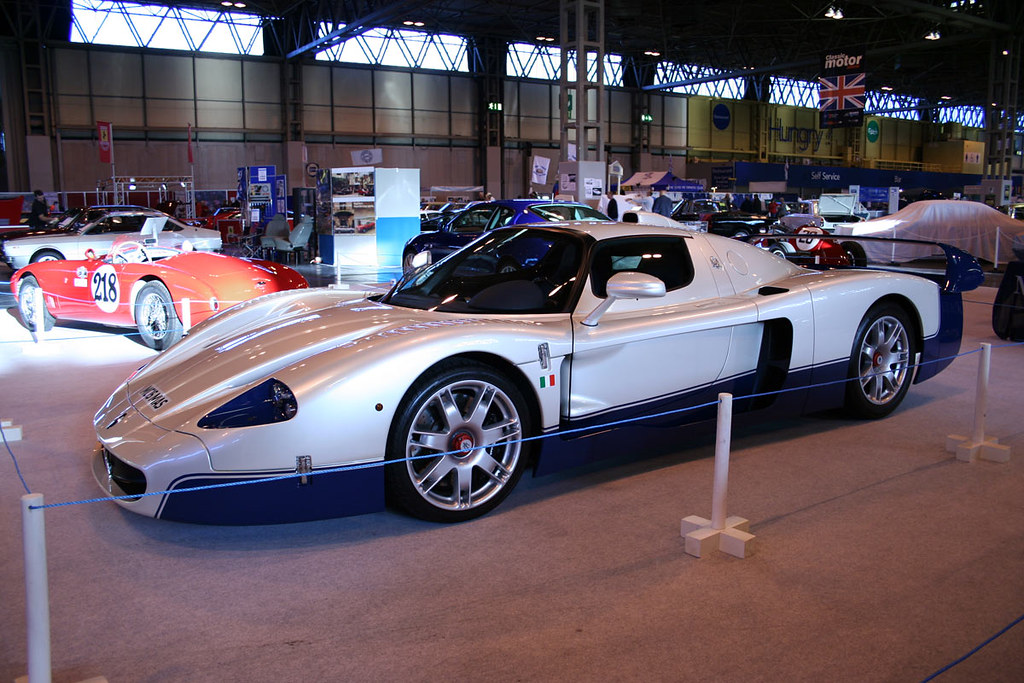
2. **The Development Journey: From MCC to MC12**The journey of the MC12 from concept to reality was a meticulous and intensely collaborative endeavor, spearheaded under the astute direction of Giorgio Ascanelli. The project initially bore the internal development codename “MCC,” standing for “Maserati Corse Competizione,” reflecting its racing aspirations. Simultaneously, a road-going version was being developed, initially dubbed “MCS” or “Maserati Corse Stradale.” This parallel development process ensured that both the track-focused and street-legal variants shared a common, high-performance DNA while being finely tuned for their distinct environments.
The stunning and aerodynamically optimized body styling of the MC12 was largely the work of Frank Stephenson, who at the time served as the Director of Ferrari-Maserati Concept Design and Development. His creative vision built upon an initial shape conceived by Giorgetto Giugiaro, which was refined through extensive wind tunnel testing to achieve its optimal aerodynamic form. Throughout its rigorous development, the MC12 underwent intensive testing, with Andrea Bertolini serving as the chief test driver. Notably, even the legendary Michael Schumacher contributed to this crucial phase, frequently testing the MCC at the renowned Fiorano Circuit, a testament to the car’s extreme performance potential before it was officially christened the MC12.
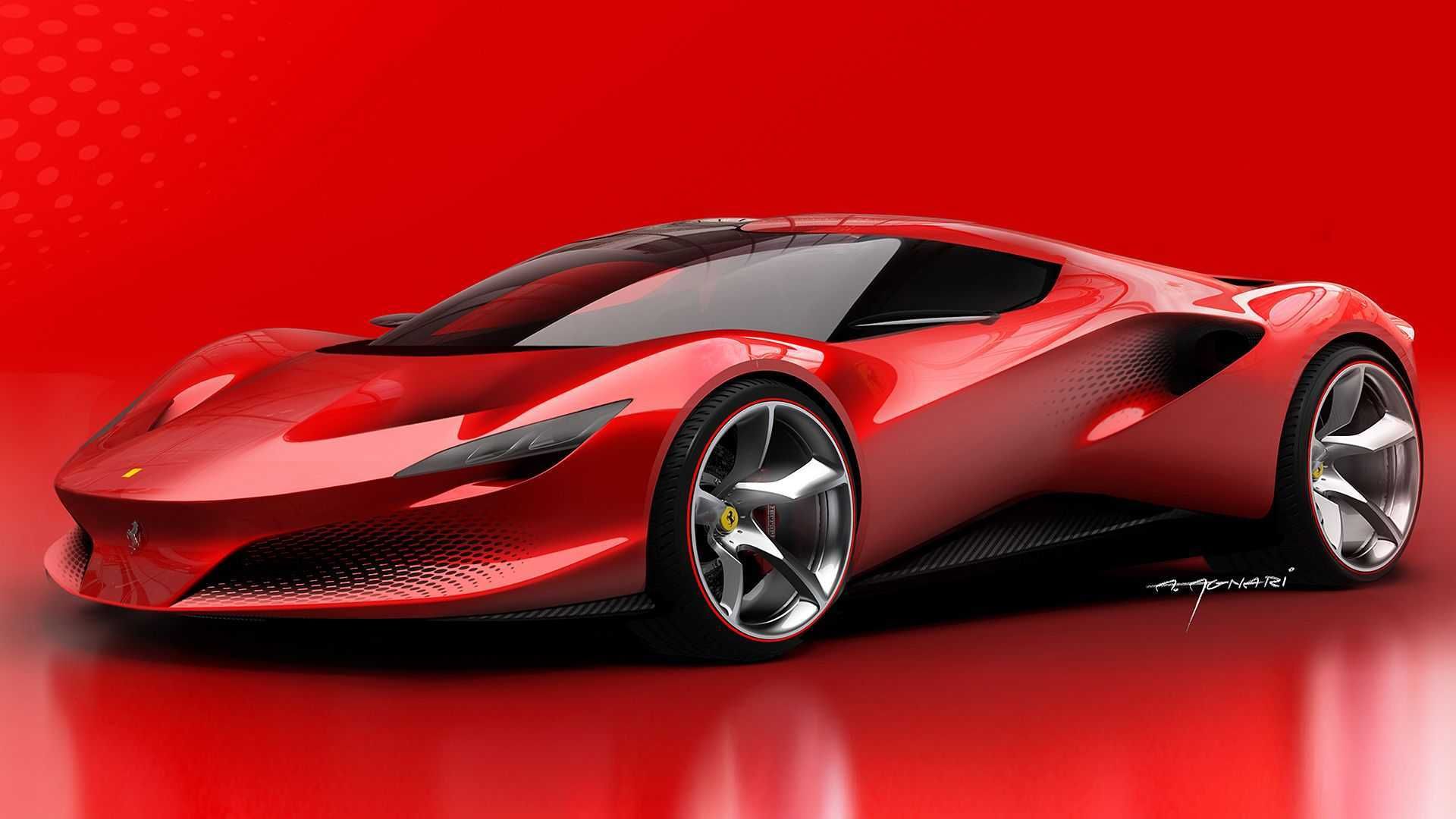
3. **The Ferrari Enzo Connection: A Shared Pedigree**At the very core of the Maserati MC12’s extraordinary capabilities lies a profound and strategic connection to one of Ferrari’s most revered creations: the iconic Ferrari Enzo. This intimate relationship was a direct benefit of the Fiat Group’s ownership of both illustrious brands, allowing for a seamless transfer of cutting-edge technology. The MC12 was heavily based on the Enzo Ferrari, sharing its fundamental chassis and track (the length of the axle between the wheels). More significantly, it adopted a slightly modified version of the potent Ferrari F140 V12 engine, a powerhouse renowned for its performance.
Furthermore, the MC12 utilized the same core gearbox as the Enzo, though Maserati imbued it with its own unique identity by renaming it the “Maserati Cambiocorsa.” While sharing these critical underpinnings, Maserati meticulously ensured the MC12 maintained its distinct character. Interestingly, the windshield is the only externally visible component that is directly shared with the Enzo, highlighting Maserati’s commitment to crafting a unique and individual bodywork that clearly differentiated its masterpiece, even with such a prestigious shared pedigree. This approach allowed the MC12 to benefit from proven, world-class engineering while forging its own unique visual and performance identity.
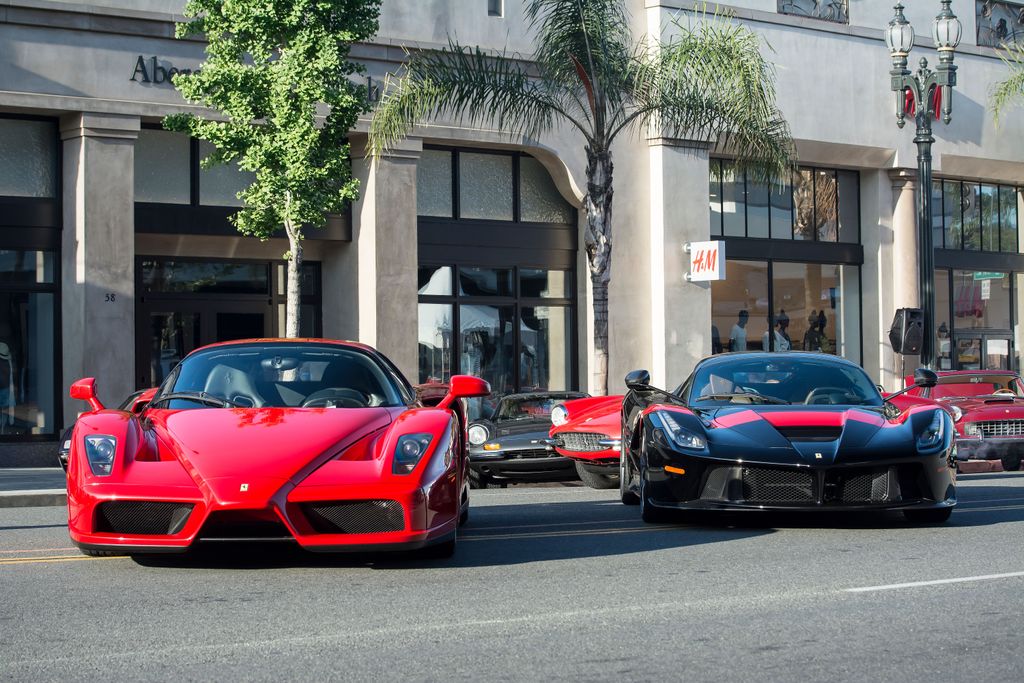
4. **Unique Design & Dimensions: Beyond the Enzo**Despite its shared foundational elements with the Ferrari Enzo, the Maserati MC12 was purposefully designed to be a far more imposing and aerodynamically advanced machine. Maserati’s vision led to a vehicle that was considerably larger overall than its Ferrari sibling. The final car emerged not just longer, but also wider and taller, creating a more dramatic presence on the road and track. This increased scale was not merely for visual impact; it was meticulously engineered to enhance the car’s dynamic capabilities.
The design team, under Frank Stephenson, crafted a unique body that boasted a sharper nose and exceptionally smoother curves compared to the Enzo. This meticulous sculpting contributed to a significantly lower drag coefficient, allowing the MC12 to slice through the air with greater efficiency. Crucially, the expanded dimensions and refined body shape enabled the creation of greater downforce across the entire vehicle’s surface. This increased downforce, combined with a strategically integrated two-meter spoiler, was vital for enhancing stability and grip, particularly at the extreme speeds the MC12 was built to achieve in the demanding world of GT racing.
Read more about: Road Trip Revelation: 15 Gas Station Chains Serving Up Surprisingly Delicious Eats That Will Change Your Mind

5. **Exterior Aesthetics: A Tribute in White and Blue**The exterior of the Maserati MC12 is a compelling study in functional art, where every element serves an aerodynamic purpose while contributing to its striking visual appeal. Crafted entirely from lightweight carbon fiber, the car’s body underwent exhaustive wind tunnel testing to achieve optimal downforce across every single surface. This meticulous approach is evident in its bold features, such as the expansive two-meter-wide, yet remarkably slender, rear spoiler, which measures a mere 30 mm (1.2 in) thick. The smooth underside of the car and the strategically placed diffusers on the rear bumper are also integral to exploiting ground effect, further enhancing its stability and grip at high speeds.
A defining characteristic of the MC12’s exterior is its iconic white-and-blue color scheme, a powerful visual tribute to Maserati’s rich racing heritage. This distinct livery was chosen to honor the America Camoradi racing team, which famously campaigned the Maserati Tipo Birdcages in the early 1960s. While discerning customers could commission bespoke color schemes for an additional cost, the standard white and blue profoundly underscored its racing lineage and exclusivity. However, the sheer physical presence of the MC12, notably longer and wider than even a Hummer H2, coupled with the pragmatic absence of a rear window, presented unique practical challenges, making everyday maneuvers like parking a considerable undertaking for its privileged owners.
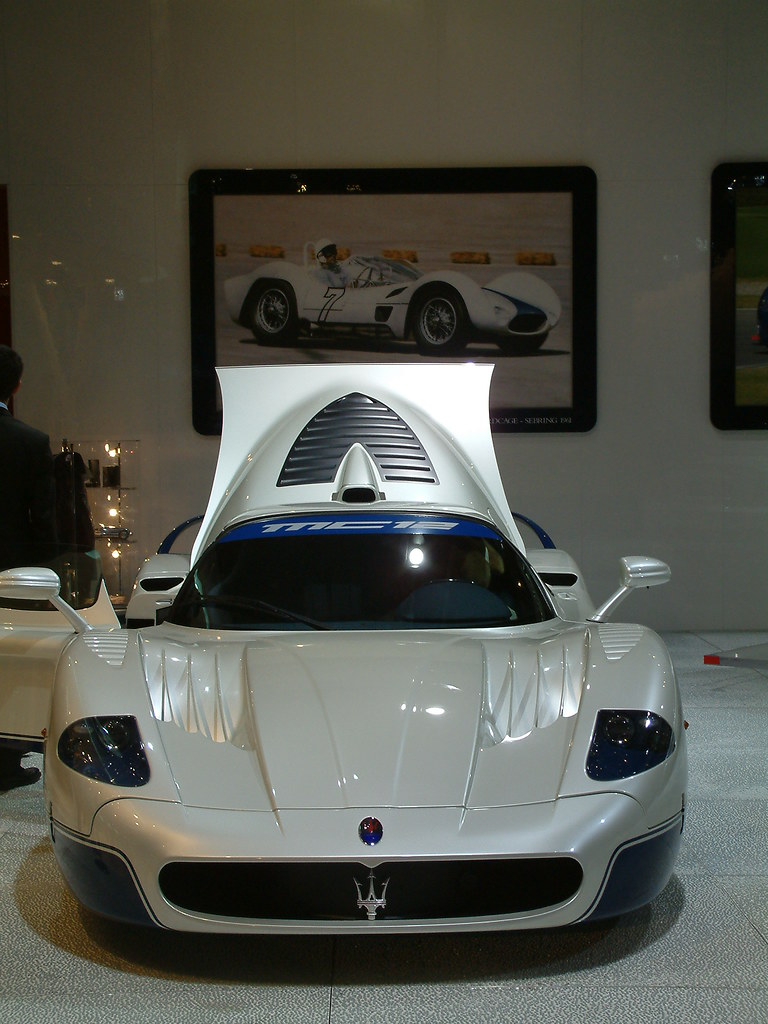
6. **Interior Luxury: A Blend of Race and Refinement**Stepping into the cockpit of the Maserati MC12 reveals a captivating fusion of raw racing functionality and surprising interior luxury, a testament to its dual purpose as a homologation special derived from a competition car. The cabin is an exquisite blend of high-performance materials and bespoke finishes. Passengers are enveloped by the sophisticated interplay of sleek gel-coated carbon fiber, rich blue leather, and an intriguing silver “Brightex,” a synthetic material so exclusive and expensive that it was reputedly deemed “too expensive for the fashion industry.” This combination underscores Maserati’s commitment to both cutting-edge technology and uncompromising elegance.
The center console, though minimalist, features characteristic Maserati design cues, including the classic oval analogue clock and a distinctive blue ignition button, subtly reminding the driver of the car’s unique pedigree. However, true to its primary focus on unadulterated driving performance, the MC12 made certain deliberate concessions. Critics often pointed out the notable absence of a factory-installed radio or car stereo, and even the lack of provisions for an aftermarket sound system, a clear signal that the car’s most important symphony was intended to be its roaring V12 engine. Similarly, the practical absence of a trunk space further solidified its identity as a purebred sports car, designed for the thrill of the drive rather than the conveniences of a conventional grand tourer.
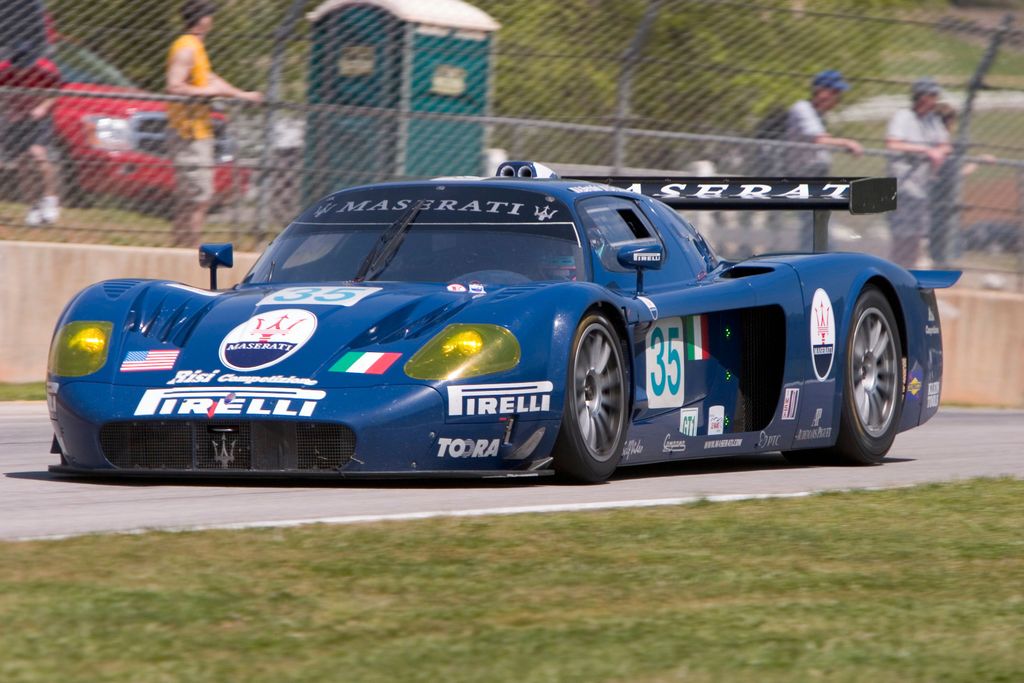
7. **Powertrain: The Heart of a Beast**At the very core of the Maserati MC12’s prodigious performance lies a monumental powertrain: a 5,998 cc (366.0 cu in) V12 engine, derived directly from the esteemed Ferrari Enzo. This longitudinally-mounted, 65-degree V12 powerhouse, weighing a mere 232 kg (511 lb), was meticulously engineered for breathtaking output and immediate responsiveness. Each of its cylinders features four valves, optimized for efficient combustion, and is lubricated via a sophisticated dry sump system, ensuring consistent oil delivery even during high-G maneuvers on the track. A compression ratio of 11.2:1 further amplifies its energetic character, extracting every ounce of power from its fuel mixture.
This V12 marvel unleashes a torrent of raw power, producing a maximum torque of 652 N⋅m (481 lb⋅ft) at 5,500 rpm, culminating in an astounding maximum power output of 630 PS (621 hp; 463 kW) at 7,500 rpm. While its redline is officially indicated at 7,500 rpm—though it can safely reach 7,700 rpm—it differs subtly from the Enzo’s 8,000 rpm limit. A unique engineering refinement distinguishing it from the Enzo’s engine is the strategic use of gears, rather than chains, to drive the camshafts, a testament to Maserati’s fine-tuning and dedication to optimal mechanical integrity. Power is seamlessly channeled to the rear wheels through a rear-mounted, six-speed automated manual transmission, famously rebranded as the “Maserati Cambiocorsa.” This gearbox, while sharing its core with the Enzo’s transmission, was specifically tuned with different gear ratios and delivers incredibly rapid shifts in just 150 milliseconds, actuated by a robust mechanical system featuring a 215 mm (8.5 in) twin-plate dry clutch, ensuring seamless and explosive acceleration that defines the MC12’s driving experience.
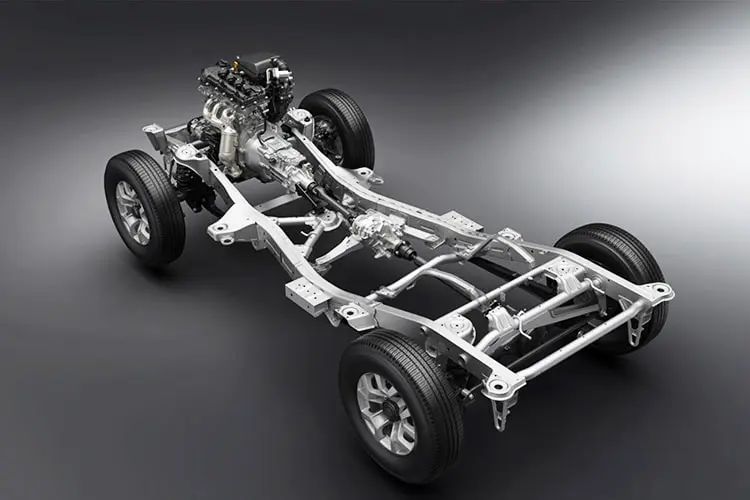
8. **Chassis & Suspension: Engineering for Control**The Maserati MC12’s formidable performance begins with its monocoque chassis, a masterwork of lightweight strength crafted from carbon and Nomex. This robust core is reinforced by aluminum sub-chassis at both ends, integrated with a roll bar for enhanced safety and structural integrity. This meticulous engineering provides an exceptionally stable and rigid foundation, essential for a car built to dominate both road and track.
A finely tuned double wishbone suspension system complements this chassis, ensuring superior control and precise handling. Push-rod-operated coil springs efficiently manage wheel movements and body roll, maintaining consistent tire contact. Dampers are calibrated to smooth the ride, absorbing imperfections while preserving direct feedback. For navigating real-world obstacles, a convenient button raises the front suspension, allowing the car to clear speed bumps or steep inclines, showcasing thoughtful practicality alongside extreme performance.
The MC12 also offers dynamic adaptability through two distinct chassis tuning modes. The “sport” mode serves as the balanced standard setting for road use. For ultimate track performance, the “race” mode reduces “Bosch ASR” traction control intervention, granting more driver command at the limit. This mode also quickens gear shifts and stiffens the suspension, transforming the MC12 into an even more responsive and agile machine, perfectly tuned for aggressive circuit driving.
Read more about: 15 of the Rarest Italian Cars: A Deep Dive into Craftsmanship, Racing Heritage, and Enduring Allure
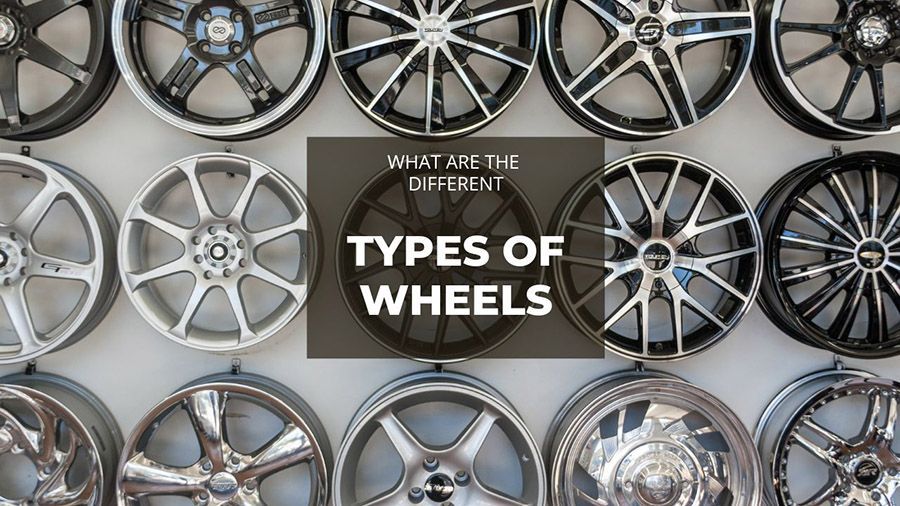
9. **Wheels & Braking: Grip and Stopping Power**Translating the Maserati MC12’s immense power to the asphalt demands exceptional grip and control, achieved through its precisely engineered wheels and braking system. The car features substantial 485 mm (19 in) wheels, measuring 230 mm (9 in) wide at the front and a more aggressive 330 mm (13 in) at the rear. These dimensions create an expansive contact patch crucial for handling the car’s formidable torque and ensuring high-speed stability. “Pirelli P Zero Corsa” tires, with specific codes for front and rear, were chosen for their renowned high-performance capabilities, optimizing traction for blistering acceleration and precise cornering.
Bringing the MC12 to a rapid halt from its incredible speeds is entrusted to high-performance Brembo disc brakes, integrated with a Bosch anti-lock braking system (ABS) for controlled and efficient deceleration. The front boasts massive 380 mm (15 in) diameter discs paired with six-piston calipers, delivering immense stopping force and exceptional heat management. Complementary 335 mm (13.2 in) rear discs with four-piston calipers provide robust braking performance, ensuring confident stops even under extreme conditions.
A subtle yet functional detail underscores its racing pedigree: the center-lock wheel nuts are color-coded—red on the left, blue on the right. This practical differentiation simplifies rapid wheel changes, a direct carry-over from its competition variant, highlighting the functional design principles that permeate every aspect of this extraordinary vehicle.
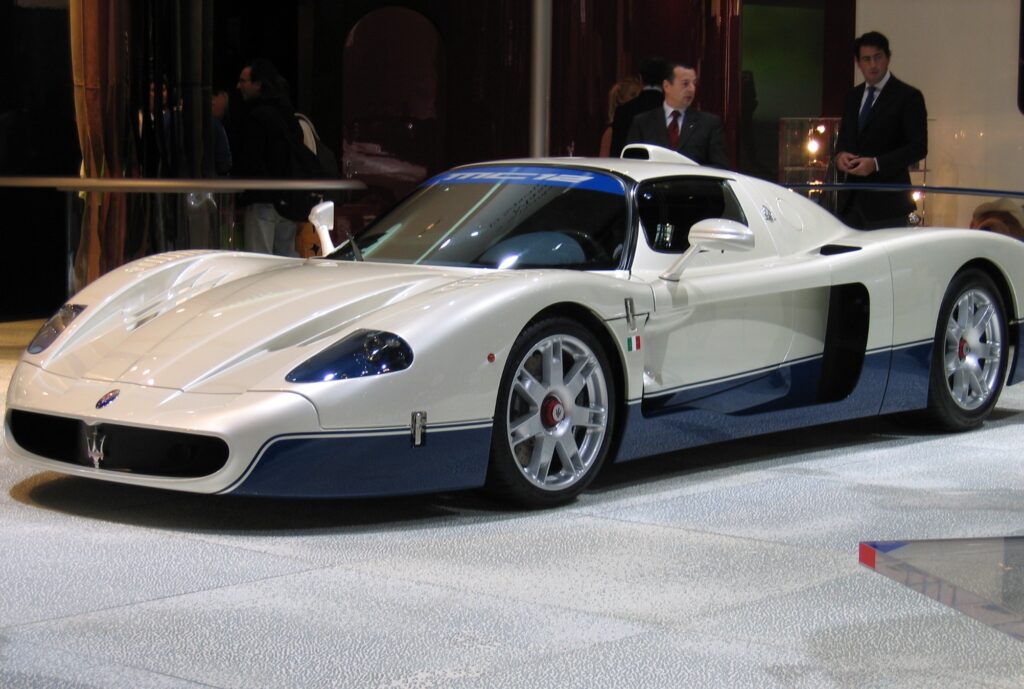
10. **Initial Reception & Critical Acclaim: The Road Car’s Debut**Upon its highly anticipated debut, the Maserati MC12 drew a varied reception from automotive critics, reflecting its uncompromising nature. Some found it challenging to drive, labeling it overpriced and excessively large, though these criticisms often highlighted its extreme, performance-oriented design. The absence of practical amenities like a trunk, rear window, or radio signaled its purpose as a pure driving instrument, where the V12’s roar was the only intended symphony.
Despite some practical critiques, the MC12 quickly earned significant praise for its exceptional dynamic prowess. Andrea Bertolini, the chief test driver, affirmed the car’s predictability and responsiveness, stating it “reacts well and is very reliable in its reactions.” This professional endorsement underscored the MC12’s exhilarating yet controllable handling. Its performance was further validated on the Top Gear track, where The Stig achieved a remarkable 1:18.9 lap time, impressively 0.1 seconds faster than the Ferrari Enzo, decisively cementing its elite performance credentials.
Frank Markus of Motor Trend Magazine offered a particularly insightful and positive perspective. He lauded the MC12’s braking stability and handling, particularly the controlled drifting permitted by its traction control. Markus contrasted it with the Enzo, observing, “There’s none of the knife-edged limit handling we criticised in the more extreme Enzo. It’s even more forgiving at the limit than an Acura NSX.” Similarly, Preston Lerner from Automobile Magazine praised its “user-friendly” nature, responsiveness, and the simplicity of its driving experience, a testament to its refined engineering.
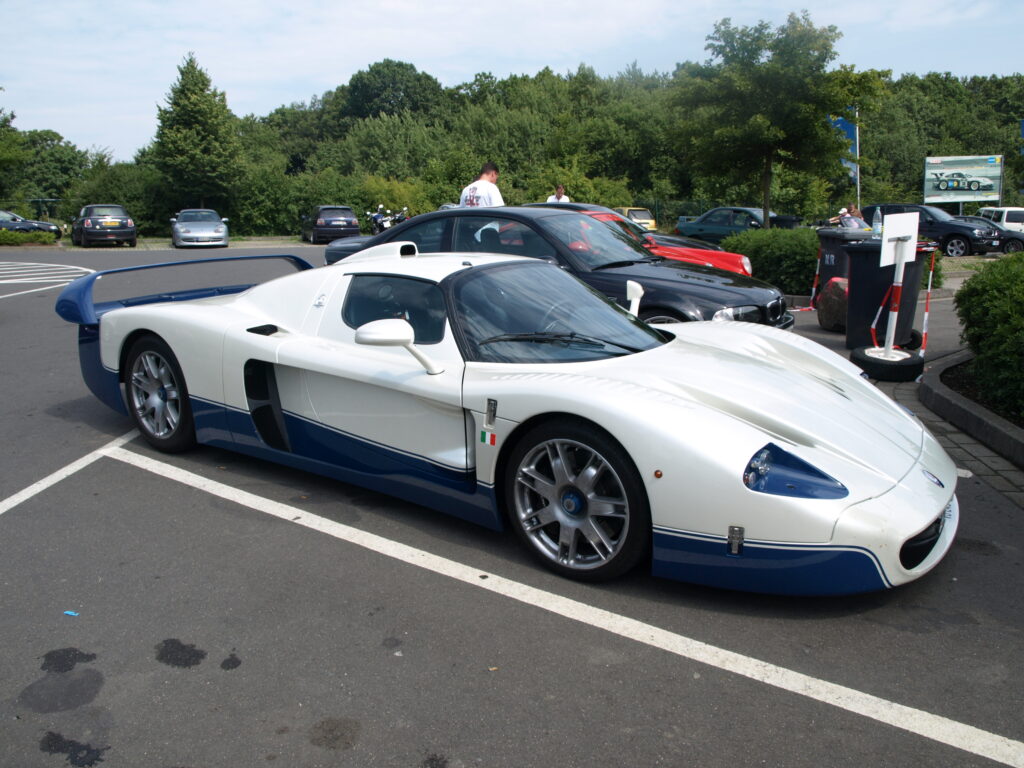
11. **The MC12 GT1: Motorsport Dominance Begins**The Maserati MC12’s fundamental purpose was to orchestrate the brand’s triumphant return to GT racing after a significant 37-year absence. In 2004, Maserati meticulously prepared three MC12 GT1 race cars for the FIA GT GT1 class. The factory-backed AF Corse squad debuted the MC12 GT1 at Imola, and despite the FIA not initially allowing points due to homologation debates, the team impressively secured second and third places, immediately showcasing its potent capabilities.
The MC12 GT1’s breakthrough arrived swiftly at the next round in Oschersleben, where Andrea Bertolini and Mika Salo clinched its inaugural victory. This early triumph powerfully affirmed Maserati’s renewed racing prowess. By the final round of the 2004 season in Zhuhai, the FIA granted full homologation, allowing the MC12s to score points. The car secured another victory, accumulating enough points to finish 7th in the teams’ championship, a remarkable achievement given its late entry. This period decisively ushered in the MC12 GT1’s illustrious racing career, establishing it as an immediate force on the global motorsport stage.
The MC12 GT1’s design underscored its singular focus on track performance, diverging from its road-legal sibling. Its structure featured a carbon-fibre and Nomex honeycomb monocoque chassis, reinforced by aluminum safety subframes and a robust roll cage. Double wishbone suspension with push rod-operated dampers ensured optimal handling. Powered by a Maserati M144B/2 6.0 L V12 engine, the GT1 weighed 1,250 kg for FIA GT, channeling power through a 6-speed sequential paddle-shift gearbox—all engineered for the relentless demands of top-tier motorsport.
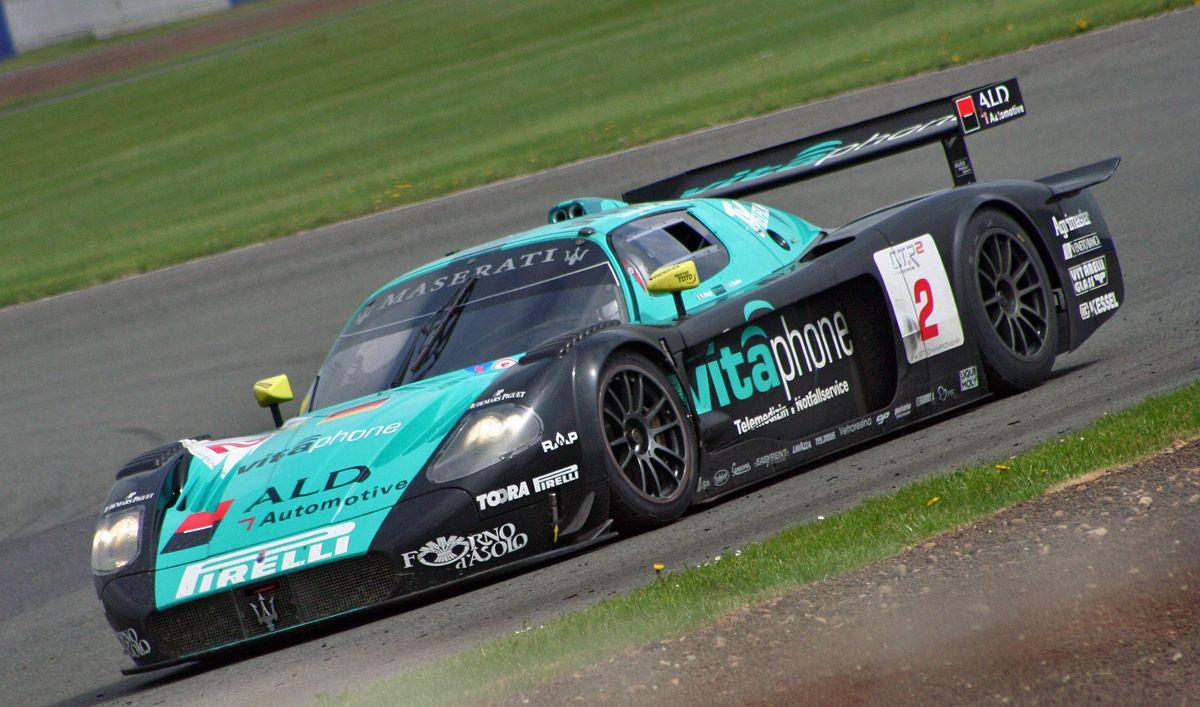
12. **Racing Dynasty: Global Triumphs and Challenges**The Maserati MC12 GT1 forged an unparalleled legacy in international motorsport, achieving an extraordinary string of victories and championships. In 2005, Maserati dominated the FIA GT Manufacturers’ Cup with 239 points, nearly doubling Ferrari’s tally. The two MC12 teams, Vitaphone Racing and JMB Racing, swept the Team Cup, finishing first and second respectively, establishing an immediate and commanding presence.
Vitaphone Racing’s dominance continued, securing five consecutive FIA GT Teams’ Championships from 2005 through 2009. Drivers Andrea Bertolini and Michael Bartels repeatedly shared first place in the Drivers’ Championship, while Thomas Biagi won it in 2007, the same year Maserati secured another Manufacturers’ Cup. Beyond FIA GT, the MC12 found significant success in the Italian GT Championship, achieving top finishes with Scuderia Playteam and Racing Box, and multiple wins at the 6 Hours of Vallelunga.
However, the MC12’s journey encountered hurdles. Its size initially prevented competition in ACO-backed series like the American Le Mans Series (ALMS); even after modifications, it remained too wide. In 2005, ALMS permitted guest appearances with weight penalties and no championship points. An attempt to enter Japan’s Super GT in 2006 was withdrawn due to aerodynamic struggles. Despite these specific limitations, the MC12’s overall track record is one of unequivocal triumph, solidifying its place as a racing legend.

13. **MC12 Versione Corse: The Ultimate Track Beast**Beyond the road-legal Maserati MC12 and its dominant GT1 racing sibling, Maserati crafted an even more exclusive and potent iteration for a privileged few: the MC12 Versione Corse. This variant was conceived purely for racetrack exhilaration, a thoroughbred machine unburdened by road legality or competitive motorsport regulations. It was directly derived from the championship-winning MC12 GT1, embodying the pinnacle of Maserati’s racing expertise in a private track-day format.
Released in mid-2006, the Versione Corse responded directly to “customer demand to own the MC12 racing car and fueled by the growth in track days.” Maserati retained responsibility for storage, upkeep, and maintenance, with owners enjoying them exclusively during specially organized track events. Notably, unlike the Ferrari FXX, the Versione Corse was not utilized for research and development; its sole purpose was to deliver unparalleled entertainment and the raw thrill of driving a pure racing machine.
Only twelve MC12 Versione Corses were sold to highly selected customers, each paying a staggering €1 million. An additional three were produced for testing and publicity. Powering it was the MC12 GT1’s engine, delivering a breathtaking 755 PS (745 hp) at 8,000 rpm—a significant 122 PS increase over the road-going MC12. This track beast also shared the GT1’s shortened nose. Standard in “Blue Victory,” customization was available. Equipped with steel/carbon racing brakes, it intentionally omitted ABS, demanding pure skill. A few were even converted to road-legal use by Edo Competition, showcasing ultimate dedication.

14. **Enduring Legacy: An Icon Forged in Performance and Rarity**The Maserati MC12, from its audacious genesis to its resounding victories, has cemented its position as an enduring icon of rarity and high performance. Its narrative is a powerful blend of strategic ambition, technological synergy with Ferrari, and an unyielding commitment to re-establishing Maserati at the pinnacle of motorsport. The incredibly limited production—just 50 road-legal units, plus the exclusive 12 Versione Corses—has ensured its legendary status, propelling its market value to triple or quadruple its original price, making it one of the most sought-after and collectible supercars globally.
Beyond its scarcity, the MC12’s legacy is intrinsically linked to its extraordinary performance capabilities. Its V12 heart, derived from the Ferrari Enzo, delivered a visceral driving experience on the road, while its GT1 counterpart proved to be an overwhelming force, securing multiple championships. The car’s distinctive design, with imposing dimensions and sophisticated aerodynamics, was not merely visually arresting but supremely effective at speed, underscoring meticulous engineering. Even criticisms regarding its lack of practical amenities merely underscore its single-minded purpose as a pure, unadulterated performance machine.
The MC12’s profound influence extended beyond its own production, inspiring subsequent automotive designs and concepts, notably the Maserati Birdcage 75th concept car, directly based on the MC12’s chassis. This connection highlights the foundational excellence of the MC12’s platform and its role in Maserati’s design evolution. As time progresses, the mystique surrounding the MC12 only deepens. It remains a supercar known to few, experienced by even fewer, but revered by all who grasp its profound impact on Maserati’s rich heritage and the broader landscape of high-performance automobiles. It is far more than just a vehicle; it is a powerful embodiment of Maserati’s engineering prowess and unwavering competitive spirit, a true masterpiece of rarity and performance that continues to captivate enthusiasts worldwide.

